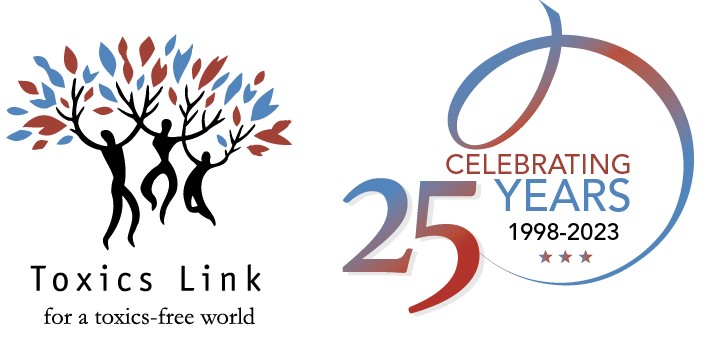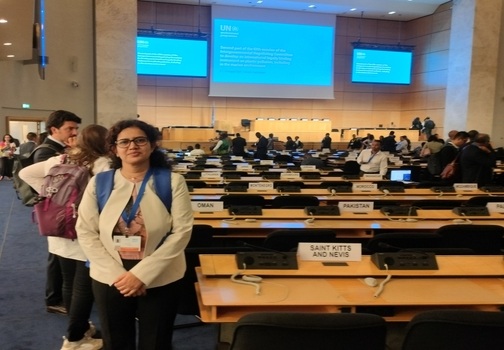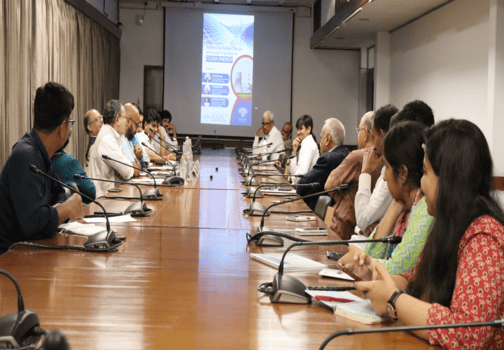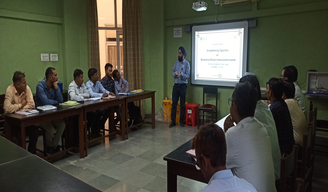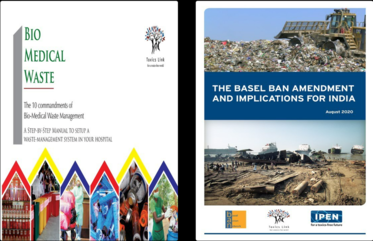Release of hazardous waste by factories
GOVERNMENT OF INDIA
MINISTRY OF CHEMICALS AND FERTILIZERS
LOK SABHA
UNSTARRED QUESTION NO: 2204
ANSWERED ON: 29.07.2022
Release of hazardous waste by factories
Jayant Sinha
Will the Minister of CHEMICALS AND FERTILIZERS be pleased to state:-
(a) the type and quantum of hazardous waste generated annually by factories in chemical and industrial areas of Jharkhand, particularly in Hazaribagh and Ramgarh districts;
(b) the steps taken by the Government to ensure compliance with established procedure for waste discharge;
(c) whether the Government has taken any action for non-compliance against the aforementioned factories during the last 5 years; and.
(d) if so, the details thereof?
ANSWER
MINISTER OF STATE FOR CHEMICALS AND FERTILIZERS
(SHRI BHAGWANTH KHUBA)
(a) As per the information provided by Jharkhand State Pollution Control Board (JSPCB), total 2,02,821.43 MT of hazardous waste has been generated during 2020-21 from hazardous waste generating units of Jharkhand. Further the details on the quantity of hazardous waste generated from Hazaribagh and Ramgarh districts & State of Jharkhand is given in the table below:
- No. Category Quantity of hazardous waste generated in Hazaribagh District (MT) Quantity of hazardous waste generated in Ramgarh District (MT) Quantity of hazardous waste generated in State of Jharkhand
(MT)
- Land fillable 0.00 0.00 16,454.85
- Incinerable 0.00 0.00 439.83
- Recyclable 202.87 343.16 14,738.41
- Utilizable 63.20 10.49 1,71,181.35
Total 266.07 353.64 2,02,821.43
(b) to (d): Government of India, Ministry of Environment, Forest and Climate Change has notified the Hazardous and Other Wastes (Management and Transboundary Movement) Rules, 2016 (hereinafter referred as HOWM Rules, 2016), under the Environment (Protection) Act, 1986, to ensure safe storage, treatment and disposal of hazardous wastes in an environmentally sound manner without causing adverse effect to environment and human health. The steps taken by the Government to ensure compliance are as under:
- Wastes from chemical manufacturing industry like pesticide, pharmaceutical, petrochemical, dye & dye intermediate, fertiliser, refinery, organic chemical, paint, etc. are classified as hazardous waste based on the toxic characteristics. Such wastes are listed in Schedule- I of the HOWM Rules, 2016.
- The industries which are involved in handling, generation, collection, storage, packaging, transportation, use, treatment, processing, recycling, recovery, pre-processing, co-processing, utilisation, offering for sale, transfer or disposal of the hazardous waste are required to obtain authorization from the concerned State Pollution Control Boards (SPCBs)/ Pollution Control Committees (PCCs) and in accordance with the procedures laid down under the Rule 6 of the said Rules.
III. For management of hazardous wastes, the hierarchy steps shall be followed mainly:
- Prevention; 2. Minimization; 3. Reuse; 4. Recycling; 5. Recovery, 6. Utilisation including co-processing and 7. Safe disposal through incineration or secured landfilling.
- Central Pollution Control Board has published various guidelines for effective management of hazardous waste. CPCB has also prepared 81 Standard Operating Procedures (SOPs) for utilization of various categories of hazardous waste and circulated to all SPCBs/PCCs. Such guidelines and SOPs are available at CPCB website https://cpcb.nic.in/technical-guidelines/ and https://cpcb.nic.in/sop-for-hw-specific/ respectively.
- SPCBs/PCCs are the prescribed authority for implementation of Rules including monitoring of compliance of various provisions, conditions of authorization and taking action against violations of the aforesaid rules as per Rule 21 and Scheduled VII of HOWM Rules, 2016.
